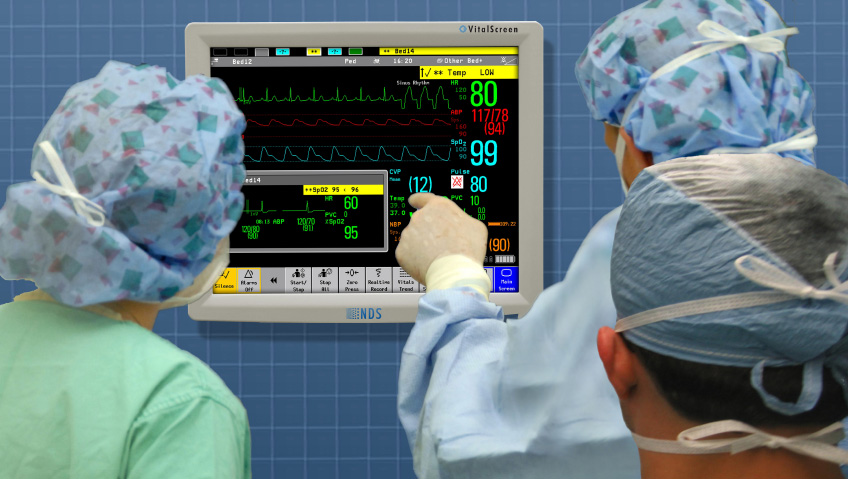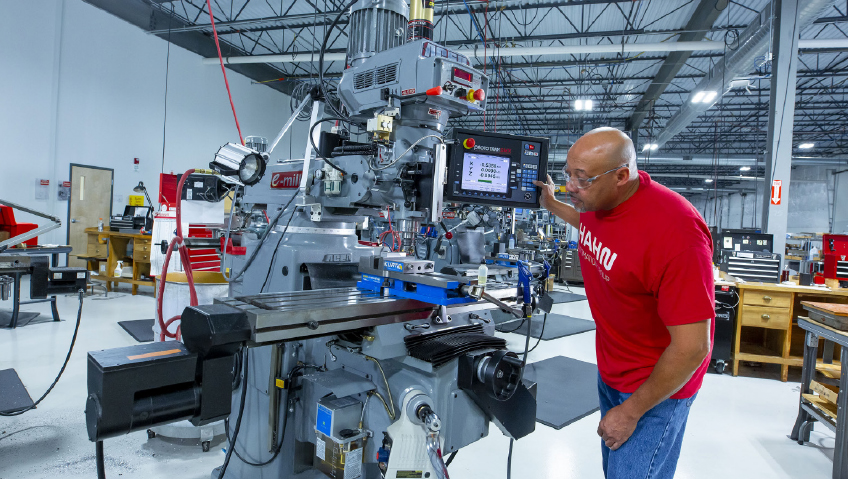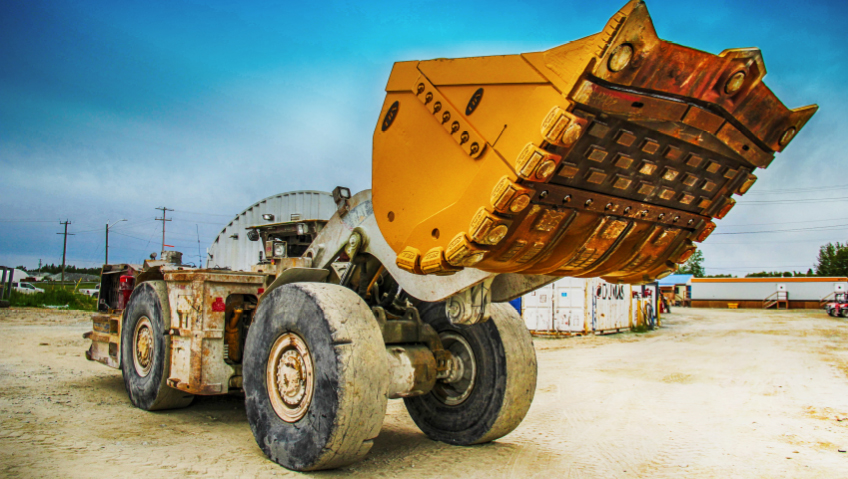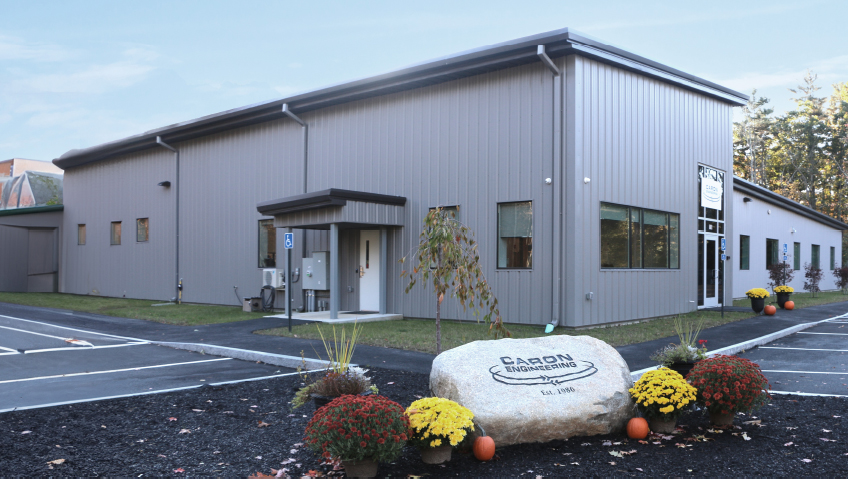Touch screen technology has come a very long way since A D Metro was founded in 1993, with some of that advancement thanks to innovations from this livewire company.
Today, it’s hard to imagine a time without this timesaving technology, appearing on everything from smartphones and self-serve kiosks in fast-food restaurants to handheld game consoles, all-in-one computers, ATMs, and more. And then there are the specialist applications, such as military and aerospace, transportation, industrial, medical, and marine.
Providing touch screen solutions to leading original equipment manufacturers (OEMs), system integrators, and value-added resellers, A D Metro’s range of control panels, kiosks, and mobile computing solutions continues to advance the technology and broaden the market, bringing the company repeat business and a respected place in the field.
A D Metro’s touch screen technology is also found in products delivered by Fortune 100 companies for applications in defense, aerospace, industrial automation and medical equipment.
Much of A D Metro’s success comes from the company’s well-earned reputation for service, quality, and stability, says Albert David, President, CEO, and Chief Technical Officer. The company creates the raw sensor technology which fits into monitors, terminals, and other applications.
Once products are qualified, they cannot be changed unless they’re re-qualified. One instance is a small medical patient monitor, which the company has supplied to a client for about eight years.
“Even if we wanted to change the simplest little component on the touch screen we make for them, they’d have to go through a re-qualification process, and that holds everything up,” David explains. “Once the design is set in stone, they start producing high volumes, but nothing can change on it. So the key to our success is delivering a reliable, quality product, with great service, to ensure that this captive audience in both medical and defense applications is not motivated to try and change developers.”
An industry veteran, David was active in technology long before founding A D Metro 30 years ago, and was working for a Japanese company distributing computer componentry. There was plenty of competition in the market, and the company—which rebranded product and sold it under its logo—began to lose market share. David’s assessment was that there was a market out there, but for an expanded product line, if he could acquire more suppliers. He soon found a partner in Montreal and launched ‘Prime Peripheral,’ which focused on PC point-of-sale peripherals.
About three years later, David bought out his partner, moved the head office to Ottawa, and changed the name to A D Metro. “It stands for ‘Alpha Delta Metro,’ not ‘Albert David,’ he laughs. “The reason for that was to get us to the top of lists in trade shows and publications with a name that started with an ‘A.’”
The company’s early years focused on point-of-sale and PC peripheral products like cash drawers, receipt printers and displays—essentially everything that would be connected to a PC to make it a point-of-sale system. The reason, he says, was that Canada introduced the Goods and Services Tax (GST) in 1991. “When GST came in, you had to be able to track input credits and apply them against what you had to pay at the end of the reporting period,” he explains.
“Dedicated cash registers weren’t able to do that at the beginning, so a lot of software vendors started developing software to make intelligent point-of-sale systems. Once that became successful, restaurant management systems began to flourish and use some of the same basic peripherals, like touch screens.”
Thanks to touch screen technology, businesses like restaurants were able to track orders and receipts. Servers couldn’t invite friends to have a ‘free’ meal, because nothing could be ordered through the kitchen unless it went through the point-of-sale system.
Along with deterring theft, point-of-sale systems unified orders and sped up how quickly they could be inputted. Touch screens became a natural evolution of point-of-sale and restaurant management systems, making ordering easier, incorporating barcode scanners, and being able to pick an item from a menu on a screen without navigating via mouse and keyboard.
“Touch screens were a natural evolution,” says David, adding that since these screens were also smaller than a keyboard and mouse, they helped to save table space.
At the time A D Metro started, all touch screens were convex-shaped bent touch screens, designed to sit in a cathode-ray tube (CRT), back when all monitors were CRT. The challenge was to find vendors who could ‘slump’ the glass to match the curvature of a 14-inch CRT monitor, form the polyester membrane with a conductive coating on it to fit the shape, and put everything together to make a membrane-type touch screen.
“You couldn’t just put an ad in the paper and hire an engineer who had touch screen technology and knew how to do this, and there were also trade secrets.” Using his engineering knowledge, David cobbled a system together and found a supplier who could make bent glass.
A D Metro then began making the first bent touch screens, selling them under their own brand. As technology evolved, the industry moved away from bent CRTs to flat-screen LEDs. Around the same time, peripherals sold by the company, such as receipt printers, cash drawers, pole displays, and barcode scanners, went from branded status items to commodities.
As competitive pressure from Asia grew, David realized there were servicing gaps relating to defence, military, medical, and industrial requirements. While offshore producers were putting out cheaper, consumer-type products, these were not suitable.
“Higher-end applications—industrial, medical, and military—can’t use and don’t want to use products like that,” he says. “We started looking for technology that would differentiate our offerings from cheap suppliers because there was a need, and people started coming to us.”
This led to his finding a way to put very thin micro glass on a resistive sensor, which resulted in the creation of the company’s flagship product, ULTRA. Described by David as “a game changer for medical, military, and defence applications,” ULTRA Resistive Touch Screens can go where capacitive and regular resistive technology cannot.
Working the same way as resistive touch screen sensors, ULTRA’s Glass-Film-Glass (GFG) construction features a borosilicate glass membrane (essentially tempered Pyrex), which reduces fracturing, prolongs lifespan, and has an extended operational temperature range.
Available in display sizes ranging from 3” to 24”, the ULTRA 5-Wire resistive armoured touch sensors are ideal for applications such as airports, railways, and rapid transit systems. “It’s still being sold, and is our number one product, with many patents on it,” says David.
Unlike capacitive touch screen technologies, ULTRA’s resistive touch technology does not emit any radiofrequency, so it is ideal for the stealth requirements of defense applications. It is able to operate in any weather, and the company’s demonstration video shows it taking a beating, still functioning after being burnt, frozen, and having ice scraped off it. Also able to operate underwater and in any environmental conditions, it is well-suited for outdoor applications, such as car washes.
David recalls a large Canadian Oil and Gas customer using ULTRA touch screen terminals outside car washes until recently, when the company making kiosks was replaced by another manufacturer and used touch screens from another maker. The new business didn’t use ULTRA, but some sort of projected capacity touch screen which was rife with problems, especially touch screens turning dark and discolouring from sunlight.
Recently, A D Metro received a call that the kiosk manufacturer wanted them back supplying ULTRA touch screen solutions. “That’s a good example of where we can go, and where other technologies cannot go.”
ULTRA is also used in many medical applications. Durable and salt-free borosilicate glass is resistant to many chemicals, which allows the screens to be sanitized.
Along with ULTRA, A D Metro has developed other leading technologies. These include LCIR (Linear Correlating Infrared) touch screens used in avionics, particularly in helicopters where the technology solves a problem specific to these aircraft.
The combination of a helicopter’s fast-rotating blades and sunlight can create a strobe effect that interferes with light-registering instruments. A D Metro came up with a unique technology that works in an environment where competitors’ products will not, since they can’t function with sunlight hitting the optics. As a frame-based technology working with infrared light beams, LCIR can tolerate direct sunlight.
With LCIR, there is no substrate glass covering the display, so nothing impedes the optics. This makes it ideal for radar, mapping applications, high-contrast applications, and avionics. While some manufacturers claim that their products can work with sunlight, it is only possible with a deep top to shield the optics, shading them from direct sunlight.
“That’s kind of inelegant, whereas we have a very compact design,” says David. “Our frame is one-eighth of an inch high and a quarter of an inch thick, whereas the competition might be three-quarters of an inch thick. The very tight restrictions in avionics control panels make them impractical to install where space is extremely limited and displays crush up against each other,” he explains. “That’s where we’ve got the edge. You don’t need that type of top cover to keep the sunlight out.”
Thanks to A D Metro, these screens are also impervious to dirt and debris. Since optics are in front, they’re easy to clean, and will actually instruct the user to wipe the screen.
The company is also behind the ARGON PCAP. A projected capacitive controller, it senses and adapts to the connected (off-the-shelf) PCAP sensor size, format, and cover glass. Projected capacitive controllers need to be programmed to the actual sensors they’re working with because they have a sequence of horizontal and vertical channels. These channels—and there can be 100 of them—are hard-wired to the computer. Plug in the ARGON controller and it will sense channels and parameters to ensure optimal touch performance. It is so sensitive it can be operated wearing latex gloves.
“We can do a lot of things with the ARGON product that we developed to make plug-and-play usage out of projected capacitive that you can’t do with just a standard projected capacitive controller,” explains David. There’s no need to work with suppliers on programming changes and operation, unlike with other products on the market.
The company has several prominent suppliers of Projected Capacitive (PCAC) chips expressing interest in ARGON. “We’re working with a few of them right now to see if we can make an industry standard of that to make it much easier to use projected capacitive technology without the high level of support that’s required.”
Although there are no particular plans to mark the company’s 30th anniversary, Albert David is upbeat about A D Metro’s future.
“If we are here today, we won’t be gone tomorrow; we were here in 1993, and we’re still here in 2023. We’re not a fly-by-night operation, and we have a solid, in-demand product line. We’re servicing a niche market that a lot of higher volume suppliers don’t seem interested in.”






